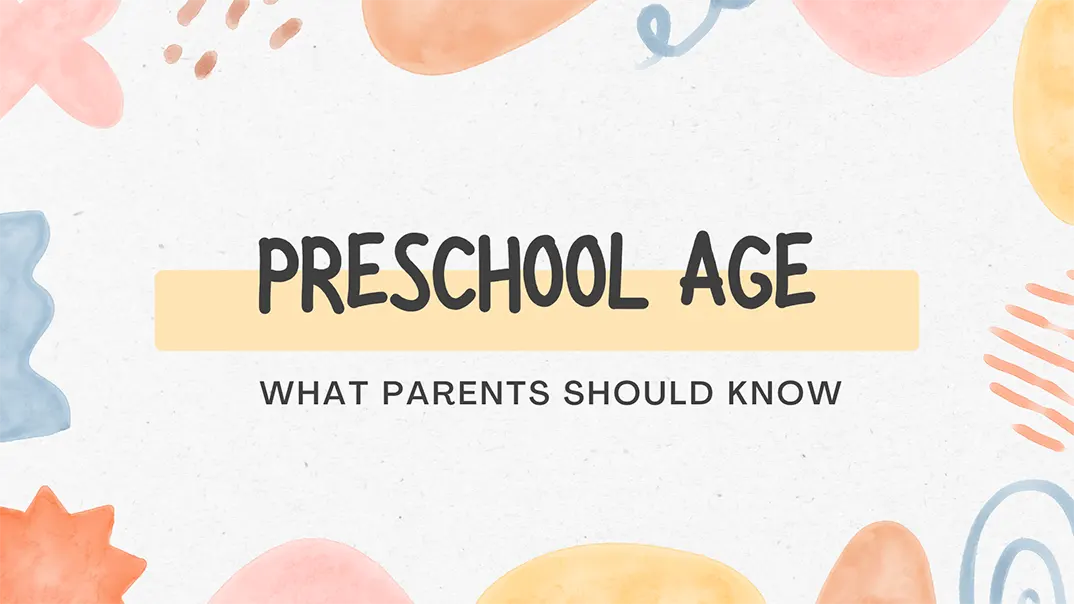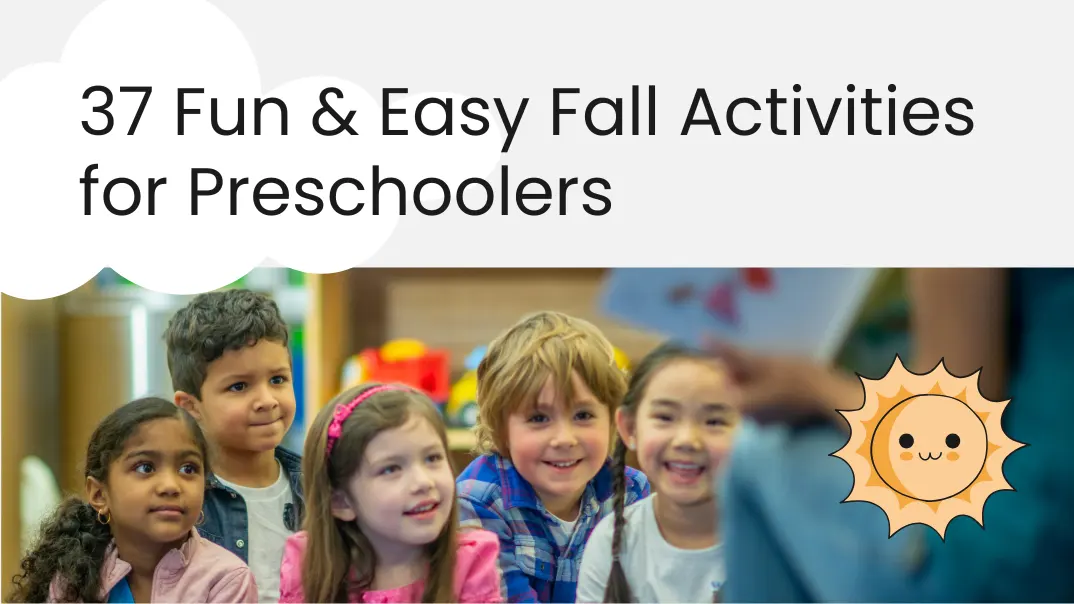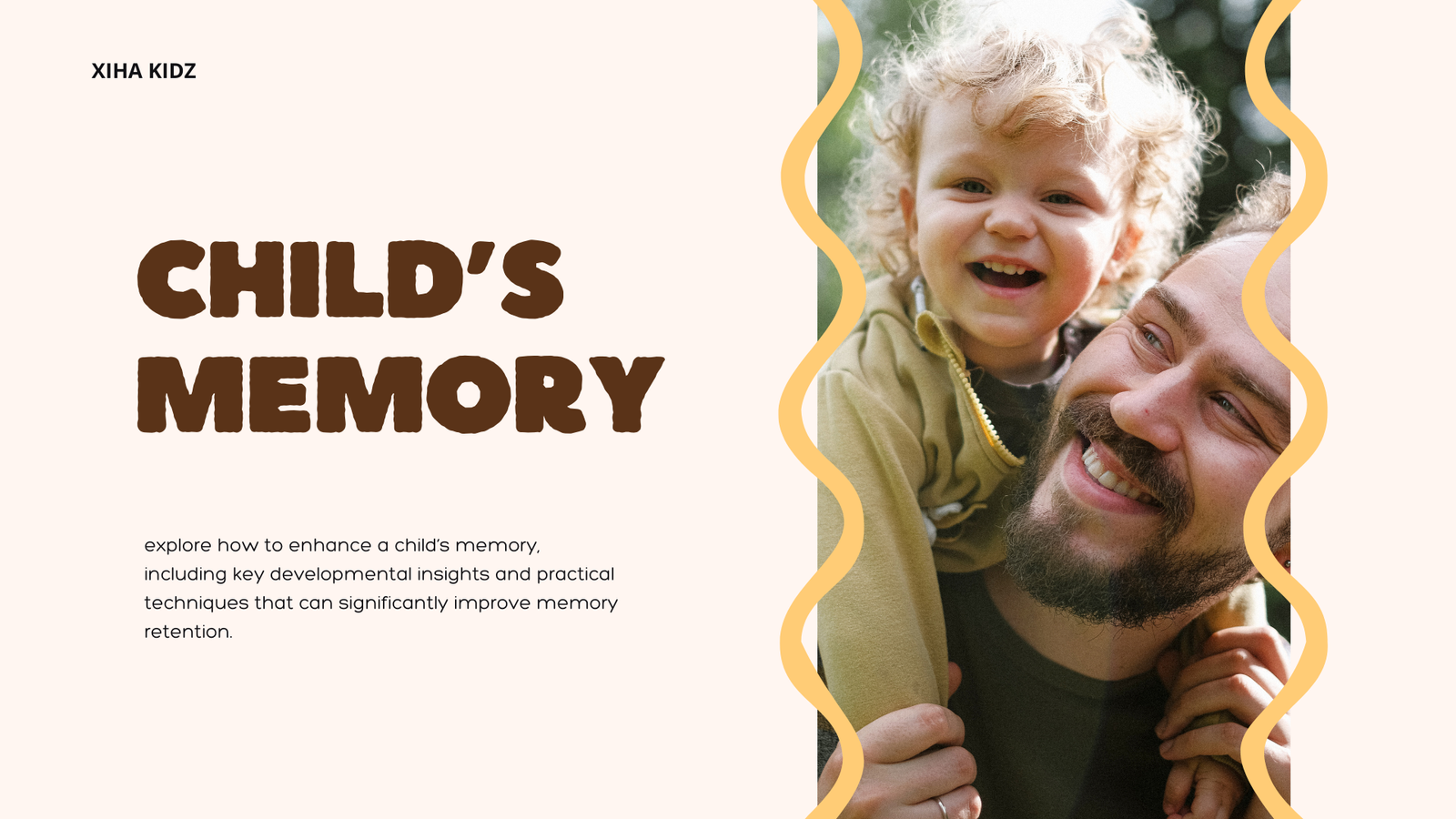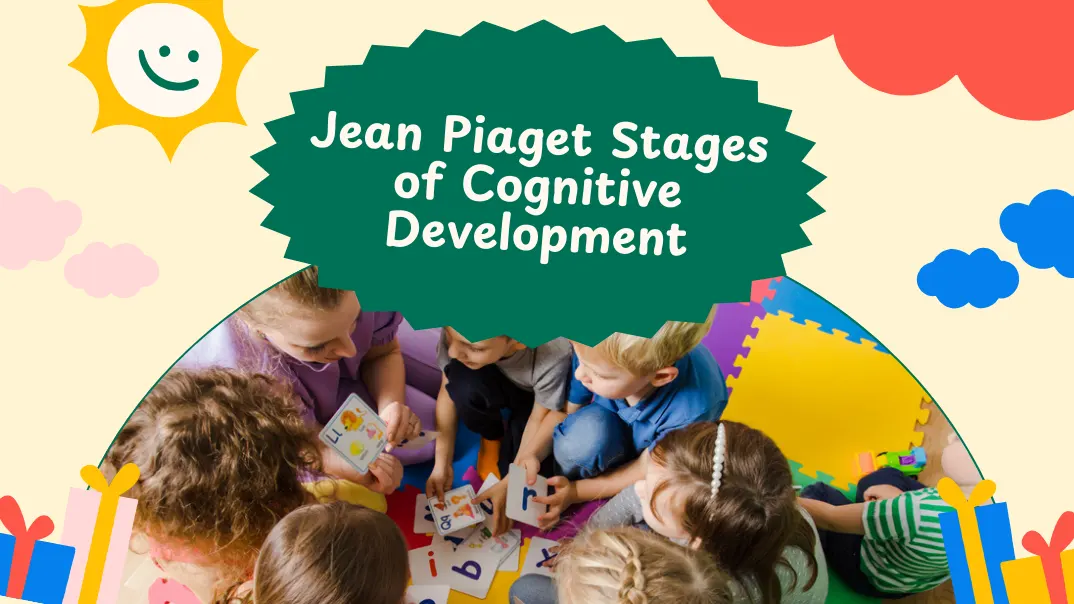What age is preschool? Is your child ready for preschool? How can you tell if they’re ready to leave the comforts of home and join a classroom? It can be difficult for a parent to determine whether their child is prepared for the social, emotional, and academic challenges of entering school.
Preschool generally serves children in the preschool age range of three to five years old, with most children starting between three and four years old. However, depending on their development and family needs, some children may begin as early as two and a half or later. Every child progresses at their own pace, and there are specific signs to assess preschool readiness. From social skills to early learning abilities, understanding these indicators will help you make an informed decision about your child’s readiness.
In this article, we’ll help you find the signs indicating your child is ready for preschool and provide helpful tips for preparing them for this exciting step. Keep reading to discover how you can support your child’s readiness for preschool in a way that works for you and them.
What Age Do Kids Start Preschool?
One of the most common questions parents have is, “What age do kids start preschool?” The preschool age typically ranges from 2 to 5, but the exact age can vary depending on the child’s developmental readiness and the specific preschool program. Many children start preschool around age 3, though some may begin at age 2 or 4, depending on the school’s policies and the child’s maturity.
Typically, children start preschool between the ages of 2 and 5. However, this preschool age range can vary slightly depending on the preschool’s guidelines and the child’s individual needs. Some schools offer pre-kindergarten programs that begin at age 4, while others might accept children as young as 2.5, especially in more flexible or play-based preschool environments.
Is Preschool Required?
One of the parents’ most frequently asked questions about early education is whether preschool is mandatory. The answer depends on the country and region, but preschool-age children are generally not legally required to attend preschool. Unlike kindergarten or primary school, which are often mandated by law in many places, preschool remains a voluntary, non-compulsory step in a child’s education. While preschool is not required by law in most places, it offers significant benefits for children during the critical preschool age years.
Benefits of Preschool Education
- 認知発達: Preschool helps children develop basic math, literacy, and problem-solving skills through age-appropriate activities. This early learning encourages curiosity and prepares them for future academic success.
- Socialization Skills: Through daily interactions with peers, children learn essential social skills such as sharing, cooperating, and resolving conflicts. These skills help them adapt to the structured environment of formal education.
- Emotional Development: Preschool fosters emotional growth by building confidence and teaching children how to manage emotions. It also encourages independence as children spend time away from their parents in a structured environment.
- Preparation for Kindergarten: Preschool prepares children for kindergarten’s academic and social demands. It introduces them to structured routines and basic educational concepts, ensuring a smooth transition to formal schooling.
- Exposure to Diversity: Preschoolers are often exposed to different cultures, backgrounds, and learning styles. This diversity helps them develop a broader worldview and an appreciation for others.
- School Readiness: Preschool improves a child’s readiness for school by developing key skills like language, motor abilities, and the ability to follow instructions. These skills lay the foundation for success in later years of education.

How to Determine If Your Child Is Ready for Preschool
While every child develops at their own pace, there are some key indicators you can observe to help you assess their readiness. Here are some of the major developmental factors to consider when deciding if your child is ready for preschool at preschool age:
身体の発達
Physical development is an important factor in determining preschool readiness. Children refine their fine and gross motor skills at preschool age, crucial for engaging in preschool activities. Key signs of physical readiness include:
- Gross Motor Skills: Children should be able to run, jump, climb, and engage in activities that require coordination.
- Fine Motor Skills: The child should be able to hold a pencil or crayon, start using scissors, and engage in basic art activities.
Social Skills
One of the most important factors in preschool readiness is your child’s ability to interact with others. Preschool is a social environment, and kids who are ready for preschool tend to be interested in interacting with other children. If your child:
- Enjoys playing with other children,
- Can share toys and take turns,
- Can follow basic group instructions (like lining up or sitting in a circle),
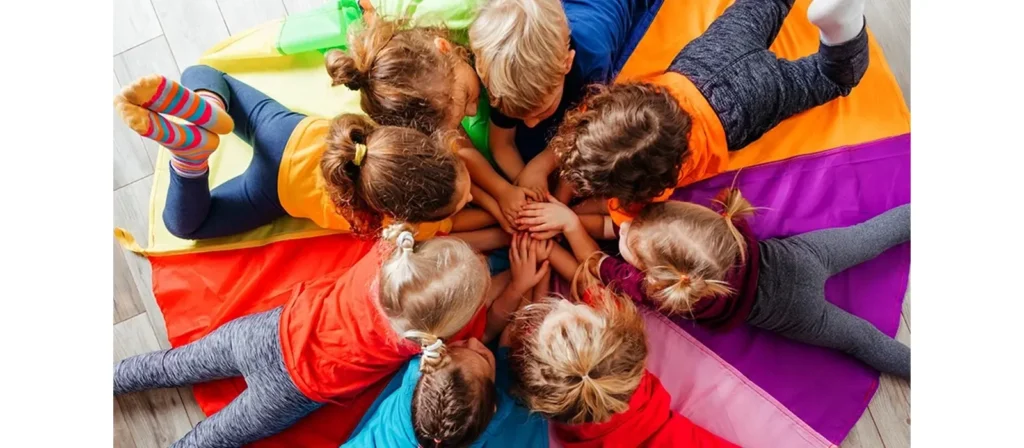
Remember that preschool will allow your child to learn and practice these social skills, but they should at least have a foundational understanding of engaging with peers at preschool age.
Separation Anxiety
A common challenge for many children at preschool age is the ability to separate from their parents without becoming overly distressed. Children who are ready for preschool are typically able to be apart from their parents for a few hours without experiencing severe anxiety or emotional distress. If your child:
- Can be left with a trusted caregiver for short periods,
- Is comfortable being away from you in familiar environments,
- Shows curiosity about new experiences or people,
Some separation anxiety is normal at this age, so it’s important to assess whether the anxiety is manageable and whether your child is beginning to cope with it.
Potty Training
Another important milestone in preschool readiness is using the toilet independently. While every child reaches this stage at different times, most children are expected to be fully potty trained before starting preschool. Managing bathroom needs without assistance is a key part of preschool life, as it helps children feel more confident and self-reliant in a school setting.
- Can use the toilet consistently without accidents,
- Knows when they need to go and can communicate that to others,
- Can manage their clothing and wash their hands afterward,
Basic Independence
Preschool requires children to be more independent than they might be at home. This includes using the restroom without help, putting on their coat, and following simple routines. While it’s normal for preschoolers to still need help in some areas, children who show readiness for preschool can:
- Feed themselves during snack time,
- They are starting to dress themselves (even if it’s not perfect),
- Use the bathroom independently or with minimal help,
- Understand and follow a simple routine, like washing their hands or packing their bags.

Language Skills
At preschool age, children should have a basic understanding of language that allows them to express themselves and understand simple instructions. Children who are ready for preschool will likely:
- Use simple sentences to express their needs, wants, and ideas,
- Understand and follow simple verbal instructions, like “Please sit down” or “Can you put your shoes on?”,
- Engage in conversations with others, although they may not be fluent yet.
Emotional Regulation
Emotional readiness is another key factor to assess. Preschool involves a lot of group activities and learning to share space with others, which can be overwhelming for children who haven’t yet developed basic emotional regulation skills. At preschool age, a child who is ready for preschool will:
- Be able to calm down after becoming upset,
- Express their emotions in a more manageable way (e.g., saying “I’m mad” instead of having a meltdown),
- Demonstrate some self-control and an understanding of consequences.
Curiosity and a Desire to Learn
A child ready for preschool will show curiosity and a desire to explore new things. This doesn’t mean they need to be able to read or count to 100, but they should show an interest in learning and trying new activities. Signs include:
- Asking questions about the world around them,
- Showing excitement about books, songs, or learning activities,
- Demonstrating an interest in shapes, colors, letters, or numbers.
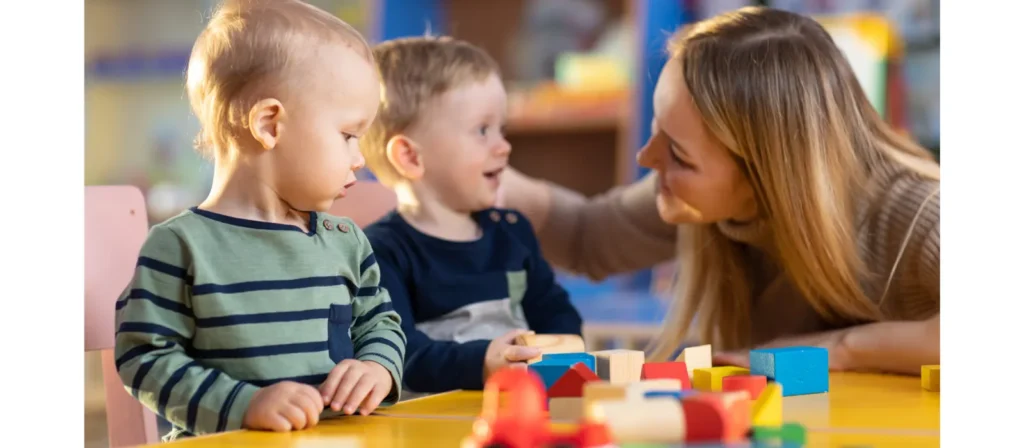
Curiosity and a Desire to Explore New Things
What If My Child Isn’t Ready for Preschool?
Not every child is ready for preschool at the same age, and that’s perfectly okay. If you’ve assessed your child’s development and feel they’re not quite ready for the structure and social aspects of preschool, there are plenty of ways to support them and help them prepare for the transition when the time is right.
Signs Your Child May Not Be Ready for Preschool
If your child is not yet ready for preschool, you may notice some of the following signs:
- Difficulty with Separation: If your child struggles with being apart from you for even short periods, this may indicate they’re not ready for the separation required in preschool.
- Social Struggles: If your child has difficulty playing with other children, sharing, or following simple group instructions, they may need more time to develop social skills.
- Limited Independence: If your child still requires a lot of help with basic tasks like dressing themselves, using the restroom, or eating, they may benefit from more time practicing independence before starting preschool.
- Emotional Challenges: Children who have trouble regulating their emotions, especially in group settings, may need more time to build emotional resilience and coping strategies before joining a preschool environment.
Consider a Delayed Start
If your child isn’t emotionally or socially ready for preschool, delaying enrollment for a year can be a good option. Signs your child may need more time to develop before starting preschool include struggles with separation anxiety, difficulty following instructions, or an overall lack of interest in socializing. Giving your child an additional year of growth can help them build the skills and confidence they need to thrive once they start preschool.
Explore Alternative Learning Opportunities
If your child isn’t ready for a formal preschool setting, plenty of other educational opportunities can help foster learning and development. You could look into playgroups, home-based learning, or preschool programs offering less structured environments. These options can provide valuable experiences for socialization and learning without the pressure of a full preschool schedule.
Examples of Alternatives:
- Playgroups: These allow children to interact with peers in a less structured, more relaxed setting.
- Home Education: Consider setting up a play-based learning environment at home, where you focus on literacy, basic math, and creativity through fun activities.
- Parent-Toddler Classes: Some centers offer classes where parents can engage with their children in educational activities, providing a bridge between home and school.
Look for a Preschool with a Flexible Approach
If your child shows interest in preschool but isn’t quite ready for a structured environment, it might be worth exploring preschools with a more flexible, play-based curriculum. Some preschools offer a slower transition process, allowing children to start part-time or gradually ease into the routine. This flexibility can be especially helpful for children who need more time to adjust or prefer a more relaxed, play-centered environment.
Benefits of Flexible Preschools:
- Allows children to adjust at their own pace.
- Offers a focus on play-based learning that encourages social interaction and creativity.
- Provides a gradual transition to full-time school, which can ease separation anxiety and help children acclimate.
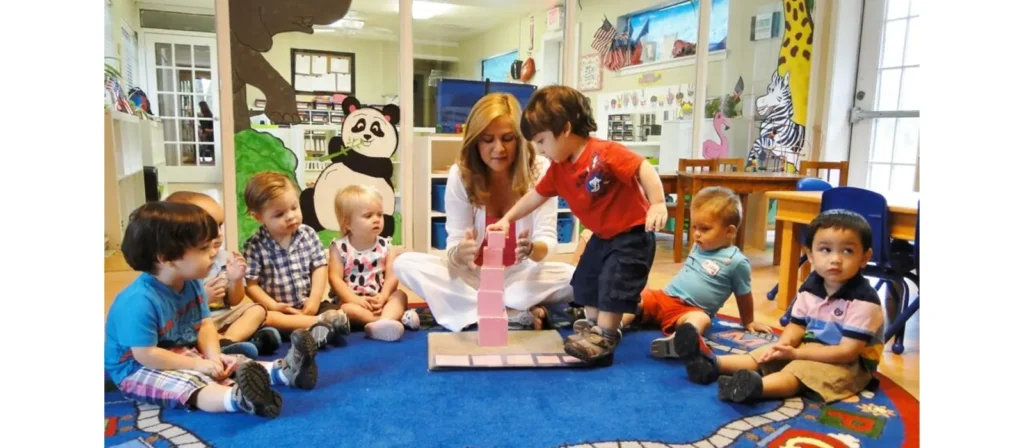
How to Prepare Your Child for Preschool
The preschool age is an exciting and transformative period in a child’s life. While it’s an exciting new chapter, it can also bring about feelings of anxiety and uncertainty for your child. Properly preparing your child for preschool can ease this transition and help them feel confident and comfortable in their new environment. Here are some essential steps parents can take to help their child adjust to preschool smoothly.
Foster a Positive Attitude Toward Preschool
The first step in preparing your child for preschool age is to foster a positive attitude about the experience. Talk to your child about preschool in an upbeat and enthusiastic manner. Explain that preschool is where they’ll make new friends, learn fun things, and have exciting activities to look forward to. Let them know that school is a safe and welcoming environment. If possible, visit the preschool together before the first day to let your child explore the classroom, meet the teacher, and see other children in the setting. Familiarizing your child with the new space can reduce fear or anxiety about the unknown.
Develop a Routine Before Preschool Starts
Consistency and routine are key to helping a child feel secure and confident at preschool age. Establish a consistent daily routine in the weeks leading up to preschool, especially for wake-up time, meals, and bedtime. Preschool often requires children to adjust to a new schedule, and gradually getting them used to waking up early, having a structured breakfast, and going to bed earlier can help them transition more easily. You can also incorporate quiet time or reading sessions to help your child adapt to a structured environment where they will be expected to follow instructions and participate in activities.
Encourage Social Skills and Independence
Preschool involves interacting with other children, so fostering your child’s social skills will help them thrive. Encourage playdates or visits to parks where your child can practice sharing, taking turns, and interacting with other kids. Also, encouraging independence is a good idea, and having your child practice basic self-care skills like putting on their coat, using the bathroom, and washing their hands. These skills build confidence and reduce potential stress when they are expected to manage these tasks independently at preschool.
Talk About Emotions and Separation
It’s normal for children and parents to feel nervous about the separation on the first day of preschool. To help your child manage separation anxiety, talk openly about how they might feel and acknowledge any emotions they may have. Let your child know it’s okay to feel nervous and that you’ll return to pick them up. Establish a consistent goodbye routine, such as a special hug or a fun phrase, to help ease the transition when it’s time to say goodbye. Reassure your child that they are safe and loved, and that you will return at the end of the day.

Prepare the Essentials for Preschool
Another way to help your child feel more prepared for preschool is by involving them in getting ready. Let your child choose their backpack, lunchbox, and any other items they might need for preschool. This gives them a sense of ownership over the experience and can help them feel more confident. Also, pack familiar comfort items, like a favorite stuffed animal or blanket, to give your child reassurance and comfort during their day at preschool.
Choose the Right Preschool for Your Child at Preschool Age
Selecting the right preschool for your child is one of the most important decisions you’ll make as a parent, especially during preschool age, which is critical for early development. The preschool environment plays a significant role in shaping your child’s early educational experience, and selecting a program that fits your child’s needs and your family’s values can set the stage for future success. Here’s a guide to help you navigate the process and make an informed decision.
Consider Your Child’s Needs and Personality
Every child is different, so the first step in choosing a preschool is understanding your child’s needs and personality. Some children thrive in a structured environment, while others do better in a more flexible, play-based setting. Observe your child’s preferences and developmental needs:
- Social Needs: Does your child enjoy interacting with other kids, or do they tend to be more reserved? If your child needs help with social skills, look for a preschool emphasizing group activities and cooperative play.
- Learning Style: Is your child curious and energetic, or do they prefer calm and quiet environments? This will help you decide whether a play-based, hands-on program or a more academically focused preschool fits best.
Research the Preschool’s Philosophy and Curriculum
Each preschool has its educational philosophy, and choosing one that aligns with your values and expectations for your child’s early education is essential. Some common preschool philosophies include:
- Montessori Education: Focuses on self-directed learning and hands-on activities that foster independence and problem-solving skills. It allows children to choose their activities and work at their own pace.
- Reggio Emilia Approach: Emphasizes creative expression, exploration, and collaboration. Children are encouraged to express themselves through art, language, and other media.
- Traditional Preschool: Often more structured, these preschools focus on preparing children for kindergarten by teaching academic skills, such as the alphabet and numbers, through planned lessons and activities.
- Play-based Learning: This approach focuses on learning through play, encouraging children to explore and develop social, emotional, and cognitive skills in a less structured environment.
Location, Schedule, and Cost
When choosing a preschool, consider practical aspects like location, hours of operation, and cost. Think about how the preschool’s schedule fits into your family’s routine. Is it convenient for drop-off and pick-up? Does it offer flexible hours or part-time options if needed?
Cost is also an important factor to consider. Preschool can be a significant financial investment, so evaluate your budget and determine what you can afford. Some preschools offer sliding scale tuition, financial aid, or scholarships to help with the cost, so inquire about these options if needed.
Teacher Qualifications and Classroom Environment
The quality of the teachers and the classroom environment play a significant role in your child’s preschool experience. Finding a preschool with qualified, experienced teachers passionate about early childhood education is important. Look for the following:
- Teacher-Child Ratio: A low teacher-to-child ratio ensures more individualized attention for each child. Ideally, one teacher should be assigned to every 8-12 children in a preschool setting.
- Teacher Qualifications: Ensure that the teachers are trained in early childhood education and have experience working with young children.
- Classroom Environment: The classroom should be safe, inviting, and well-organized, with age-appropriate materials and learning tools that encourage exploration.

カスタム家具ソリューションで教室を変身させましょう
Visit the Preschool and Observe
Once you’ve narrowed your options, visit each preschool to observe the environment and meet the teachers. Pay attention to the following during your visit:
- Children’s Behavior: Are the children engaged, happy, and actively participating in activities? Do they seem comfortable and secure in the environment?
- Classroom Atmosphere: Is the classroom space bright, clean, and welcoming? Are there plenty of educational toys, books, and learning materials?
- Teacher Interactions: Observe how teachers interact with the children. Are they patient, kind, and encouraging? Do they seem responsive to the children’s needs?
Get Feedback from Other Parents
One of the best ways to learn about a preschool is to get feedback from other parents whose children have attended. Ask for recommendations from friends, family, or your pediatrician, and see if they have experience with the preschool you’re considering. Parent reviews can provide valuable insight into a program’s strengths and weaknesses.
Trust Your Instincts
Finally, trust your gut feeling. After researching, visiting, and considering all the factors, consider which preschool best fits your child and family. Your instincts as a parent are valuable, and if something feels right for your child, it probably is.
What Are Some Common Misconceptions About Preschool?
As parents consider sending their children to preschool, many misconceptions can lead to confusion and concern. Understanding the truth behind these misconceptions can help parents make informed decisions about their child’s early education. Below are some of the most common myths about preschool and the facts dispelling them.
Misconception 1: Preschool is Only for Learning Academics
Many believe preschool focuses solely on academics, such as teaching children to read and do math. While academic learning is part of the curriculum, preschool also significantly emphasizes socialization, emotional development, and motor skills. Play-based learning is a key component of most preschools, allowing children to learn through creative play, exploration, and interaction.
The Truth: Preschool is a balanced environment where children develop a wide range of skills—cognitive, social, emotional, and physical. Learning isn’t just about books and worksheets; it’s also about interacting with peers, managing emotions, and understanding the world around them.
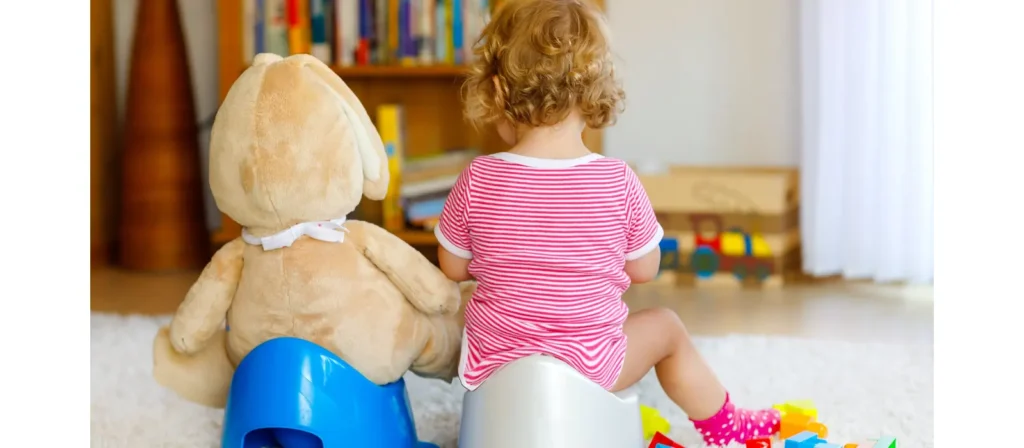
Misconception 2: Children Must Be Fully Potty-Trained Before Attending Preschool
A common belief is that children must be completely potty-trained before attending preschool. While some preschools may have specific rules about potty training, many programs are flexible and supportive of children who are still in the process of learning. Teachers are typically experienced in helping young children navigate these milestones.
The Truth: Most preschools understand potty training is a developmental process and will work with you to support your child. If your child isn’t fully potty-trained by the time they start preschool, don’t worry—many preschools have strategies to support children who are still learning.
Misconception 3: Preschool is Not Necessary if Your Child is Already Going to Daycare
Some parents believe preschool is unnecessary if their child is already attending daycare. While daycare provides care and supervision, preschool offers an educational curriculum to foster early learning and prepare children for kindergarten. Preschools are structured to focus on academic and social skills development in ways that daycares may not be equipped to do.
The Truth: Daycare and preschool serve different purposes. Daycare typically focuses on basic supervision and care, while preschool emphasizes early learning and development. Attending preschool can provide additional benefits, such as structured learning, exposure to group activities, and the development of school-readiness skills.
Misconception 4: Preschool is Only for Children with Working Parents
The common assumption is that preschool is only necessary for families where both parents work. In reality, many parents choose preschool for their children, even if one or both parents are at home. The social and educational benefits of preschool, such as learning to share, follow directions, and interact with peers, are important for all children, regardless of their parents’ work status.
The Truth: Preschool provides valuable learning experiences for all children, not just those with working parents. It can help children develop crucial social skills, independence, and a love for learning, whether or not they attend preschool to accommodate a working schedule.
Misconception 5: All Preschools Are the Same
With so many options available, it’s easy to assume that all preschools offer the same experience. However, preschools can differ greatly in their teaching philosophy, curriculum, teaching styles, and classroom environments. Whether a school is play-based, Montessori, or academic-focused, the approach to early childhood education can significantly impact your child’s experience.
The Truth: Preschools vary widely in their teaching philosophies and curricula. Parents must research and visit schools to find the best fit for their child’s learning style, personality, and developmental needs. What works for one child may not be the right fit for another.
Misconception 6: My Child Will Fall Behind if They Don’t Start Preschool Early
Many parents feel pressure to send their child to preschool as early as possible, fearing that waiting too long will cause their child to fall behind academically. However, research shows that early childhood education is most effective when it is developmentally appropriate and tailored to a child’s needs, rather than simply focusing on academic achievement.
The Truth: Starting preschool at age 3, 4, or even later doesn’t automatically mean a child will fall behind. What’s more important is ensuring that the preschool program meets your child’s developmental needs, supports social skills, and fosters a love of learning. Children can thrive at different ages depending on their individual growth and readiness.
当社の全製品ラインナップをご覧ください
幼稚園や学校向けの最高品質の家具や遊具を取り揃えた当社の総合カタログをご覧ください。
Milestones in Preschool Age Development
Preschool age, typically between 2 and 5, undergoes significant developmental milestones. These milestones mark crucial points in their cognitive, emotional, social, and physical growth. Understanding these stages can help parents and caregivers support their children’s development and provide a foundation for future learning and success. Below are some key developmental milestones that preschool-age children typically reach.
認知発達
就学前年齢 Characteristics
- Understands basic cause and effect
- Begins to understand time concepts (e.g., morning, afternoon)
- Sorts objects by color, shape, or size
- Begins to recognize patterns (e.g., ABC, 123)
- Can count up to 10 and understand basic number concepts
- Solves simple puzzles
- Engages in pretend play, demonstrating creativity
- Follows multi-step instructions
- Demonstrates an interest in books and reading
- Begins to understand the concept of quantity (more, less)
サポート
- Provide opportunities for problem-solving, such as simple puzzles or matching games.
- Counting during everyday activities (e.g., counting toys, snacks).
- Read books aloud to your child, and encourage them to retell stories.
- Encourage curiosity by asking open-ended questions and providing opportunities for exploration.
- Use everyday tasks to reinforce concepts of time, quantity, and sequencing.
Social-Emotional Development

就学前年齢 Characteristics
- Begins to show empathy (e.g., comforting others)
- Understands and expresses a wide range of emotions (happy, sad, angry)
- Becomes more independent in daily routines
- Plays cooperatively with peers, sharing and taking turns
- Shows preferences for certain friends or group activities
- Begins to develop self-regulation, managing frustration and anger
- Understands and follows simple rules in group settings
- Develops a sense of pride in accomplishments
- Seeks approval from adults or peers
サポート
- Model appropriate emotional responses to help children understand and express their emotions.
- Encourage positive social interactions by arranging playdates or group activities.
- Help children develop self-regulation by teaching calming techniques, like deep breathing.
- Provide opportunities for children to make choices and experience the consequences of their decisions.
- Praise children for cooperative behavior, such as sharing and helping others.
Language Development
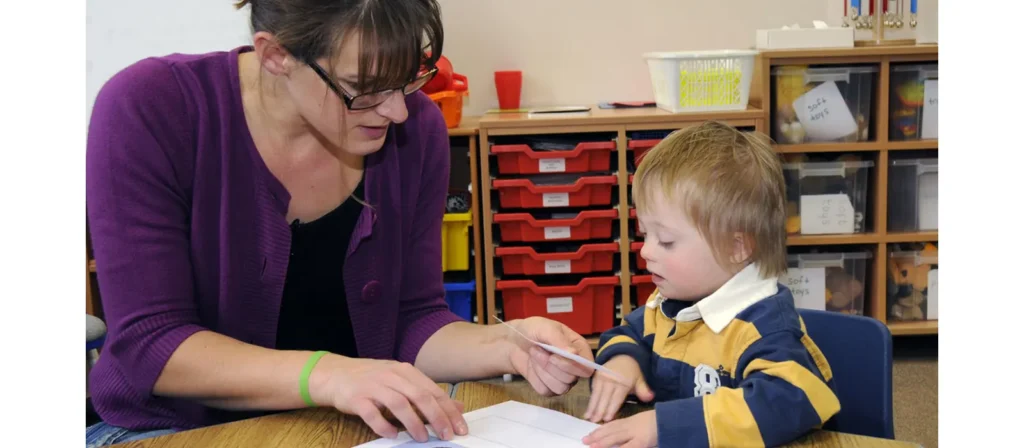
就学前年齢 Characteristics
- Expands vocabulary, using 5-6 word sentences
- Understands and uses basic grammar rules (e.g., plurals, tenses)
- Starts to engage in simple conversations and ask questions
- Can name common objects, animals, and people
- Begins to recognize letters and sounds
- Can follow simple instructions (e.g., “Put your toys away”)
- Uses language to express needs, ideas, and feelings
- Understands basic concepts like “big” vs “small” or “up” vs “down”
- Demonstrates interest in songs, rhymes, and storytelling
サポート
- Engage in regular conversations with your child to build language skills.
- Encourage reading by providing a variety of books and stories.
- Play word games (e.g., rhyming, naming objects) to expand vocabulary.
- Provide opportunities for your child to describe their experiences and feelings.
- Sing songs and nursery rhymes together to develop phonemic awareness.
身体の発達
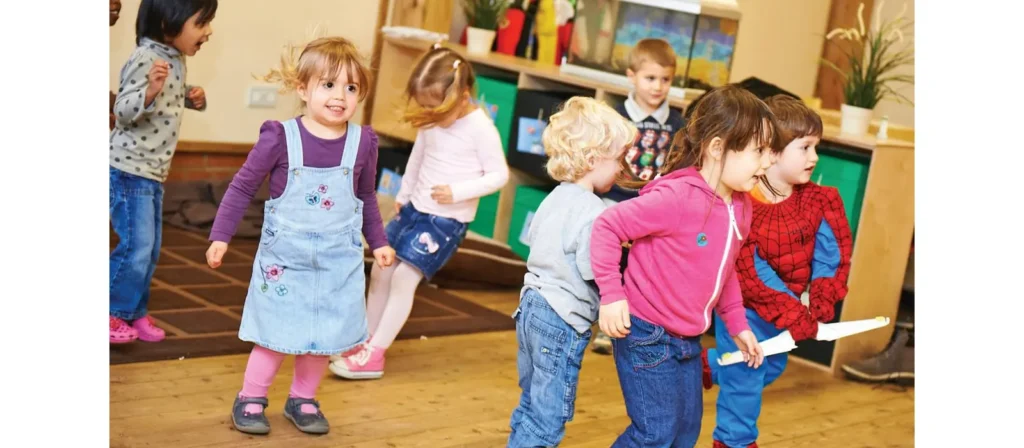
就学前年齢 Characteristics
- Develops gross motor skills like running, jumping, and climbing
- Can hop on one foot or balance briefly
- Improves coordination and ability to catch or throw a ball
- Enhances fine motor skills, such as holding a crayon or pencil correctly
- Begins to dress independently (e.g., putting on shoes, jackets)
- Can use utensils and feed themselves with minimal help
- Learns to perform self-care tasks like washing hands and brushing teeth
- Gains better control over body movements and posture
サポート
- Encourage outdoor activities like running, jumping, and playing games to build gross motor skills.
- Provide opportunities for fine motor practice, such as drawing, coloring, and using scissors.
- Offer age-appropriate toys and tools to help improve coordination (e.g., balls, stacking toys).
- Teach and model self-care routines, helping them dress, wash their hands, or clean up after eating.
- Set up safe, supervised spaces for climbing and balancing to encourage physical exploration.
Preschool vs. Pre-K
Regarding early childhood education, preschool and pre-kindergarten (Pre-K) are often used interchangeably, but they refer to different stages in a child’s development. Understanding the difference between preschool and Pre-K can help you determine which program best fits your child, especially at the preschool age.
| 側面 | Preschool | Pre-K |
|---|---|---|
| 年齢層 | 2 to 4 years old | 4 to 5 years old |
| 集中 | Social skills, emotional development, and play-based learning | Academic readiness, more structured learning |
| Curriculum | Play-based, learning through exploration and interaction | More structured, with a focus on early literacy and math |
| Learning Style | Hands-on activities, creativity, and physical play | Structured classroom environment with planned lessons |
| Social Skills | Learning to share, take turns, and interact with peers | Preparing for group work, following directions, and classroom rules |
| Academic Focus | Basic concepts like colors, shapes, and numbers | Reading, writing, and early math concepts (e.g., counting, alphabet) |
| Classroom Environment | Flexible with a lot of movement and interaction | More routine-based with longer instructional periods |
| 目的 | Social and emotional development, preparing for structured learning | Play-based learning through exploration and interaction |
よくある質問
Can my child skip preschool and still do well in school?
While some children may thrive without attending preschool, research shows that children who attend preschool tend to perform better academically and socially in later years. Preschool provides foundational skills that prepare children for the structure of formal schooling. If preschool is skipped, it’s important to create a learning environment at home to support their development.
Do I need to potty-train my child before preschool?
While many preschools prefer that children be potty-trained before attending, not all preschools require it. Some schools have accommodations for children still learning to use the toilet. Be sure to check with the preschool about their specific potty-training requirements.
How can I help my child prepare for preschool?
Preparing your child for preschool involves developing routine habits, encouraging social interactions, and fostering independence. Start by practicing self-help skills like dressing, using the bathroom independently, and following simple directions. Reading to your child and engaging in activities encouraging learning and curiosity can help ease the transition into preschool.
Is preschool necessary if my child stays home with a caregiver?
While staying at home with a caregiver offers benefits, preschool provides valuable learning opportunities that help children develop social skills, cognitive abilities, and emotional resilience. The preschool age is crucial for preparing children for kindergarten and future schooling environments, where they will interact with peers and follow structured routines.
What should a child know before entering preschool?
Children do not need to know much academic information at the preschool age. However, it is helpful if they can recognize their name, understand simple instructions, use basic language, and begin to interact with peers in social settings. Emotional readiness is just as important as separating from parents and handling minor frustrations.
Can a child with special needs attend preschool?
Yes, many preschools offer support for children with special needs. Some preschools have programs specifically designed to cater to children who require additional support in areas like speech therapy, physical therapy, or learning assistance. Finding a preschool that can meet your child’s individual needs at the preschool age is important.
結論
In the crucial preschool age years, children undergo significant cognitive, emotional, and social development that shapes their future learning and success. Whether parents enroll their child in preschool or pursue alternative educational paths, this period offers vital growth opportunities that lay the foundation for formal schooling.
Understanding your child’s readiness at the preschool age and preparing them for this new phase can help ensure a smooth transition and a positive preschool experience. By considering their unique needs, building essential skills, and choosing the right preschool, you’re setting your child up for a successful start to their educational journey.
当社の全製品ラインナップをご覧ください
幼稚園や学校向けの最高品質の家具や遊具を取り揃えた当社の総合カタログをご覧ください。

